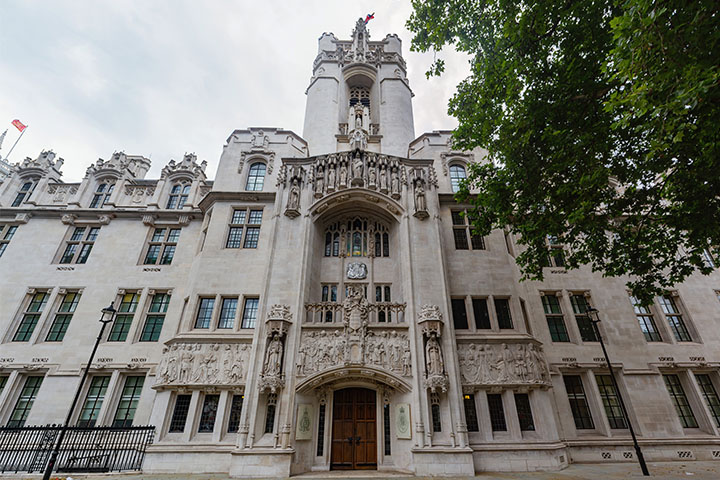

*TW: discussing child sexual abuse
The Supreme Court handed down judgment on 15 June 2022 in this important case considering the proportionality of final care orders.
The appeal concerned care orders made in relation to three children with care plans for their removal from their mother’s care into separate long term foster placements. The threshold criteria centred around one of the children having been sexually abused by an adult half sibling, a risk of future sexual harm and a failure to protect the children by their parents.
The Supreme Court distilled the central issue of the appeal to be:
In making care orders for the removal of three of the first appellant’s children into foster care:
- The proportionality question: In order to decide whether those orders were proportionate, was it necessary as a matter of law to assess the likelihood that, if left in the first appellant’s care, (a) the children would suffer sexual harm; (b) the consequences of such harm arising; (c) the possibility of reducing or mitigating the risk of such harm; and (d) the comparative welfare advantages and disadvantages of the options presented; and
- The balancing exercise question: Did the judge err in law by failing to make any or any proper assessment of those matters?”
It was set out that there were three stages for a judge to consider in most applications for a care order namely:
- Finding the relevant primary facts;
- Determining whether the legal threshold for the making of a care order has been crossed (section 31(2)(a) Children Act 1989); and, if yes, then
- Deciding the proper order to make (the disposal or welfare stage).
Analysis of potential orders
It was not argued that the assessment of the risk of harm to the children in their mother’s care was wrong, but that the judge at the first instance failed to consider at the third of these stages whether making care orders removing the children from their mother’s care was a proportionate response to that risk. It was argued that to assess this it was necessary to consider the harm the children would suffer as a result of being removed from their mother and placed in separate placements with limited contact against their wishes. This required a clear analysis of other potential orders which could be made. It was also relevant that a non-molestation order was in place which prevented the adult sibling, amongst other things, from returning to the family home.
The family courts already have clear authority that a care order should only be made if it is necessary. The case of Re B (A Child) (Care Proceedings: Threshold Criteria) [2013] UKSC 33 restated the longstanding provision in English family law that the aim of the court must be to make the least interventionist order possible. The case of Re B-S (Children) (Adoption Order: Leave to Oppose) [2013] EWCA Civ 1146 adopted the analysis of McFarlane LJ (as he then was) in Re G:
“The judicial task is to evaluate all the options, undertaking a global, holistic and … multi-faceted evaluation of the child’s welfare which takes into account all the negatives and the positives, all the pros and cons, of each option …
‘What is required is a balancing exercise in which each option is evaluated to the degree of detail necessary to analyse and weigh its own internal positives and negatives and each option is then compared, side by side, against the competing option or options.’”
Judgment
What the Supreme Court considered in this case was that although the judge’s consideration of the facts and evidence was thorough and he directed himself that his orders must be proportionate, he did not go far enough. There must be a critical side-by side analysis of the available options before the Court and an evaluative holistic assessment as set out in Re B-S.
“Whilst the judge has identified the risk of sexual harm as satisfying the threshold criteria for intervention, there is no evaluation of the extent of the risk of significant harm by way of sexual harm, nor of any available means by which the risk might be reduced for each child. Nor is there any comparison of the harm which might befall the children if left at home with the harm which would be occasioned to them if removed and separated not only from the parents but from each other.”
“…The process adopted by the judge is flawed as it did not adequately assess the prospects of various options to mitigate the risk of sexual harm. The judge does not state why the emotional damage that each of the very different subject children would suffer under a care plan which separated them from their mother, from their stepfather and no less importantly from their siblings, was proportionate to and necessitated by the identified risk of sexual harm from A, when no instances of harm had occurred since November 2019 and where a protective framework of non-molestation and interim supervision orders was in place.”
What can we take from the judgment?
This case is significant and will require judges to consider and carefully articulate in any future judgment where care orders are made:
- The risk
- The extent of the risk
- Any means by which the risk could be reduced
- A comparison of the harm should the child remain at home with the harm caused as a result of removal
- That any identified harm of removal from the family unit is proportionate to and necessitated by the risk of harm identified at 1-3 above






